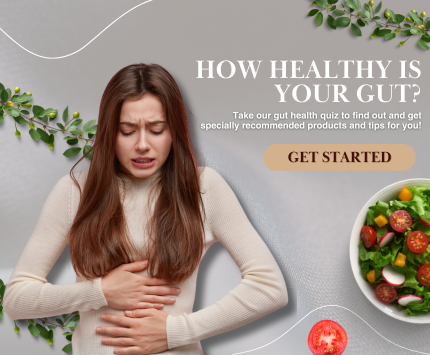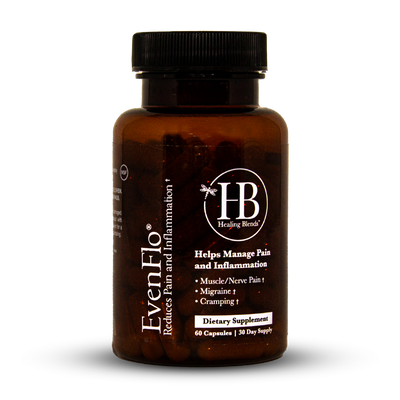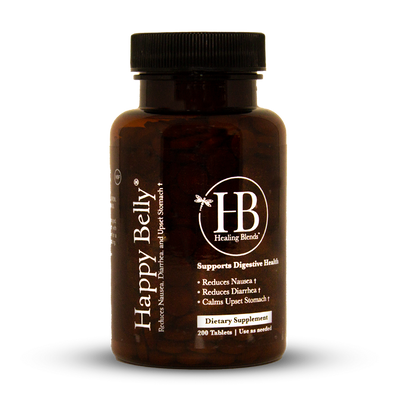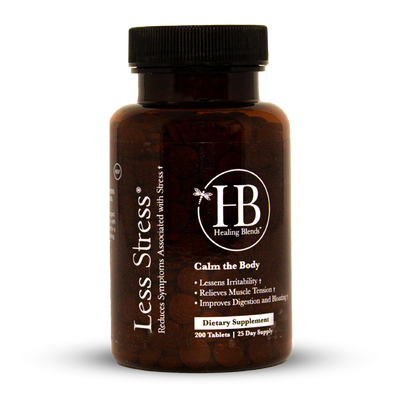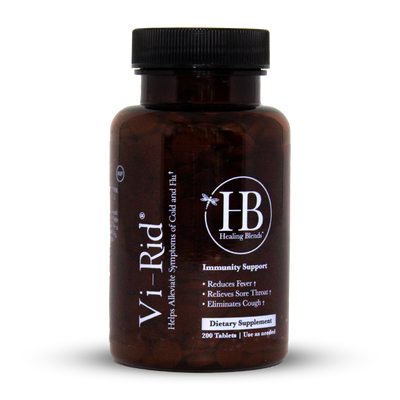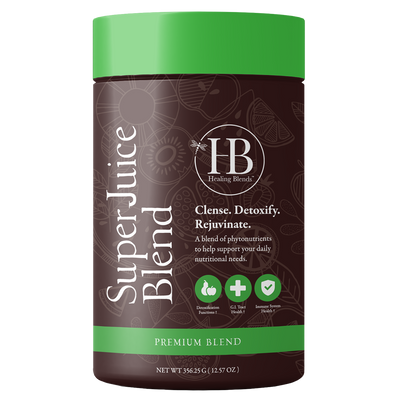The Novel Coronavirus: Everything (Scientific) You Need to Know to Protect Yourself
What is the Novel Coronavirus or COVID-19?
There are many strains of Coronavirus, and they have previously caused SARS and MERS, but this is a new strain that hasn't been seen before. The Novel Coronavirus, or COVID-19, originated in Wuhan, China and has spread internationally.
With so much information about COVID-19 going around, it can be difficult to know what’s accurate and what isn’t. This post will give you everything you need to know about the virus, backed by science.
Knowing the Enemy: The Anatomy of the Coronavirus
The “body” of COVID-19 is basically a genome enveloped in glycoproteins, with a smear of fat and bearing the crown of spikes that inspired the name “coronavirus.” The genome is a single strand of RNA that is termed “positive-sense”.
That means that the infected cell (the host’s cell) treats the viral genome as if it were its own messenger RNA (mRNA), translating it into proteins. A “negative-sense” RNA virus requires more manipulation; a host enzyme must make a positive-sense copy.
Once ensconced in a human cell, a half dozen or more viral mRNAs are peeled off. The first, representing about two-thirds of the viral genome, encodes 16 protein “tools” that viruses require to replicate. Making this toolkit is a little like downloading an installer for new software.
The tools (“non-structural proteins”) are enzymes needed to produce the other encoded proteins, and transcription factors to continually renew the RNA instructions.
The other third of the viral genome encodes four “structural” proteins that are the nuts and bolts that build the virus:
● Spike, or S protein, is made early in infection. One part of it, S1, grabs a receptor molecule sticking out of a host cell and another part fuses to the cell membrane. Three copies of the S protein form each spike.
● Membrane (M) glycoprotein lies beneath the spikes, where it shapes mature viral particles and binds the inner layers.
● Lipid (fat) is borrowed from host cell membranes during past infections.
● Envelope (E) glycoproteins control the assembly, release, and infectivity of mature viruses.
● Nucleocapsid (N) proteins knit a characteristic shell of identical subunits, like the panes of a greenhouse, that binds and packages the RNA genome. It also serves as a cloaking device, hiding viruses from our immune system’s interferons and RNA interference.
All coronaviruses share the “tools,” but differ in a few additional structural proteins tailored to the host species.
COVID-19’s Spikes Commandeer Our ACE2 Receptors. COVID-19 latches onto angiotensin-converting enzyme 2, aka ACE2. To us, ACE2 is an enzyme that converts the hormone angiotensin I to angiotensin II, which constricts blood vessels, raising blood pressure. “ACE inhibitors” are commonly used drugs that counter hypertension. To COVID-19, ACE2 is a receptor, an entranceway, in the airways and alveoli (air sacs) as well as in blood vessel linings. Humans also express ACE2 receptors in the stomach, intestines, male testes, kidneys, and heart. The virus can attach the ACE2 receptors at any of these locations causing associated organ damage.
How Does the Coronavirus Make You Sick?
Stage I - The first stage of COVID19 is an acute viral infection that shows up a couple of days after exposure. During this stage, most people experience common flu-like symptoms that may be hard to distinguish from a gastrointestinal or normal respiratory infection.
Stage II - The next phase is the clinical latency stage.
The virus becomes less active, though it’s still in the body. During this stage, people experience no symptoms while the viral infection progresses at very low levels. This period of latency can last 14-24 days and usually varies with age and gender. Many people show no symptoms of COVID-19 during this entire latency stage.
During the latency stage, the virus accumulates in the lung tissue and forms round nests that produce viruses and releases / sheds them into the air. You will pass all controls and since the virus is not that active and no fever is present. Only PCR can (sometimes) diagnose it - or a chest CT/X-RAY.
Stage III - The last and final phase is COVID-19 Stage III. During this phase, the lung tissue may be severely damaged and is vulnerable to opportunistic infections (e.g Bacterial Pneumonia). Once COVID19 progresses into stage III, symptoms associated with infections become apparent with more severe cases often leading to a cytokine storm. The cytokine storm is best exemplified by severe lung infections, in which local inflammation spills over into the systemic circulation, producing systemic sepsis, as defined by persistent hypotension, hyper- or hypothermia, leukocytosis or leukopenia, and often thrombocytopenia.
Note that a mild stage 3 can occur in which the “standard” pathology observed so far on chest x-rays involving fibrosis or the ground glass pattern may not be observed – that pathology mainly seems to appear in severe cases. In cases of a mild Stage III, it may just linger in the lung tissue and at a low level systemically, the infected individual in a “sub-critical” condition - while being contagious.
Wuhan, China is well into Stage III and the subsequent reinfection cycles, which is why it’s so much worse as the rest of the world for the time being.
Bonus: Here’s a great video explaining, in detail, what happens when you get the Novel Coronavirus:
Risk Profile for the Coronavirus: Who is Getting Sick?
Infants younger than 1 year and people over 60 years old are at higher risk than the rest of the population. Males appear to be higher risk than females, and respiratory “irritants” such as air pollution and smoking also appear to increase risk.
Asians appear to have the highest susceptibility based on ACE2 expression with Asian males appearing to be at higher risk than Asian females.
Coronavirus Mortality:
Currently reported mortality rates are variable and range from 2% as reported in China (though there are doubts as to the veracity of that number and unofficial reports suggest 5% or higher) to 20% based on the latest reports from Iran
The hospitalization rate of regular flu is about 1%, while the hospitalization rate of COVID-19 has been an estimated 20%+.
Coronavirus Symptoms
Stage I: The Acute Stage
- Fever
- Chills
- Headache
- Fatigue
- Sore throat
- Night sweats
- Loss of appetite
- Swollen lymph nodes
- Muscle aches
- Diarrhea
Many people recover from COVID19 if they seek treatment at Stage I.
Stage II: Latency Stage
- Many people show no symptoms during this stage
Medium/Mild Stage III:
- Fever
- Chills
- Headache
- Fatigue
- Sore throat
- Night sweats
- Loss of appetite
- Swollen lymph nodes
- Muscle aches
- Diarrhea
- Symptoms associated with the Virus itself, such as cognitive impairment, can also become apparent.
About 85% of Stage III patients will recover, but residual organ damage appears to be common.
Severe Stage III:
- Pneumonia (Viral and Bacterial)
- Pulmonary Embolism
- Lung Fibrosis
- Lung Thrombosis
- Heart Attack (from blood clots)
- Stroke (from blood clots)
- Multisystem-Organ Failure
- Sepsis
10-15% of severe Stage III patients are most likely to die or become handicapped for life.
Occasionally people do not show any progress in the stages for weeks and become a Super-Spreaders (>3% chance), exhibiting R0 5.0 on average ... which is simplistically described as potentially infecting everyone in their vicinity.
Enclosed spaces, whether an elevator or a plane, become very high risk. It’s easily transmissible, appearing to be airborne including aerosol droplets (infection through inhalation or absorption on mucous membranes, as well as having prolonged viability on surfaces.
Testing for the Coronavirus: Disease Progression & Why the Standard Test May Fail You
Timeline:
- Day 0 Exposure to Stage I: between 3 days and 1 week
- Start of Stage I to Start of Stage II: a 2-4 week latency phase and an outbreak that lasts for another 1-2 weeks. Worst case estimate is 6 weeks until Stage III
- Start of Stage III to Recovery or Fatality: 1-2 weeks, final outbreak stage
The virus does not tend to kill during the acute phase unless you had severe underlying health issues.
The Novel Coronavirus has an estimated R0 > 5 with superspreaders infecting dozens more. It mutates fast during the prodromal period, transferring the infection through airborne droplets as well as surface contamination.
R0 is the estimated rate of infection replication. R0 = 5 means every carrier of the virus infects 5 others. The R0 of the more common strains of influenza is below 1.5.
Days 2-5 until acute reaction, during Stage I and during Stage III. During the latency phase the Antibody count for a PCR test may vary and may be negative. The disadvantage of PCR is that it can confirm an infection, but not rule it out during a latency phase. Some people tested negative could still be contagious (Stage II).
Coronavirus Myths
There is so much information about COVID-19, it can be hard to sift through the myths from the facts. We’re doing it for you. Here are some common myths about Novel Coronavirus that have been debunked:
- MYTH: A vaccine to cure COVID-19 is available.
- Scientists have begun working on one, but this could take many months. While there isn’t a vaccine specific to COVID-19, there are other treatments that doctors are using.
- MYTH: A face mask will protect you from COVID-19.
- Wearing a face mask while you’re sick can help prevent the spread of germs, but wearing a lightweight mask to avoid illness is not recommended.
- MYTH: Ordering goods that are shipped from China will make you sick.
- The virus can stay on surfaces for up to several days, but it’s unlikely that the Novel Coronavirus will stay on a surface after being moved and traveled through different conditions and temperatures.
Coronavirus Prevention & Treatment
To date there have been reports of successful treatment of COVID-19 with the HIV drugs lopinavir/ritonavir, antiretroviral drugs that work by work by blocking HIV's ability to reproduce by binding to healthy cells. Additionally, high dose IV vitamin C has been utilized in early stages, but solid reports of its efficacy have been highly limited and perhaps anecdotal at best.
Considering the general mechanism of action as seem so far:
26 (63%) of 41 patients had lymphopenia. All 41 patients had pneumonia with abnormal findings on chest CT. Complications included acute respiratory distress syndrome (12 [29%]), RNAaemia (six [15%]), acute cardiac injury (five [12%]) and secondary infection (four [10%]). 13 (32%) patients were admitted to an ICU and six (15%) died. Compared with non-ICU patients, ICU patients had higher plasma levels of IL2, IL7, IL10, GSCF, IP10, MCP1, MIP1A, and TNFα.
We noted that patients infected with 2019-nCoV also had high amounts of IL1B, IFNγ, IP10, and MCP1, probably leading to activated T-helper-1 (Th1) cell responses. Moreover, patients requiring ICU admission had higher concentrations of GCSF, IP10, MCP1, MIP1A, and TNFα than did those not requiring ICU admission, suggesting that the cytokine storm was associated with disease severity. However, 2019-nCoV infection also initiated increased secretion of T-helper-2 (Th2) cytokines (eg, IL4 and IL10) that suppress inflammation, which differs from SARS-CoV infection.
A basic supplement stack to optimize the body and immune system to protect against an initial infection and to minimize effects in case of infection could include:
- Fish oil
- Curcumin
- Ginger
- Berberine
- Chaga mushroom
- Liposomal Vitamin C
- Vitamin D
- C60
- Generally, to properly utilize the various vitamins and supplements listed here the body must have sufficient levels of A, B, D, E, C, & K
Known approaches include fish oil (1 – 1.5 grams/day), Curcumin (1000+mg/day), ginger (1600mg/day). Additional anti-inflammatory routes using somewhat less known compounds can include berberine at 1000mg+ per day. Chaga mushroom has also been reported to have some degree of effectiveness in use against NCOV-19 in asia and is normally known for its immune modulating, antiinflammatory action, as well as anti-viral properties. Chaga is usually in the range of 500mg to 1000mg daily.
If this sounds overwhelming, it does not have to be. Many reputed healthcare and supplement brands already offer an array of tested and proven formulations using ingredients that have the potential ability to fortify the body against viral attacks.
We at Healing Blends Global recommend:
As 100% vegetarian, organic options that can work to strengthen your immune system. Given the high demand of these products over the past few weeks, we have also introduced a limited time coupon that’ll give you 15% off on the purchase of the products. You can access the coupon here.
What’s Next?
Definitely NOT panic. Is the situation looking statistically grim? Yes. But the world has faced outbreaks in the past, and this time around we have tools like social media and the internet in general to spread awareness. A few simple lifestyle modifications can take you a long way.
- Don’t shake hands. Smile instead. It is the best medicine anyway.
- Use a hand sanitizer that has more than 60% alcohol in it.
- Wash your hands regularly - 20 seconds of rigorous soaping is recommended.
Never underestimate the power of the humble bar of soap! 🧼🙌 Washing your hands regularly – either with alcohol-based rub or ordinary soap and water – is one of the most effective ways to protect yourself and others from #COVID19 and many other diseases. pic.twitter.com/hQjMPnnCrn— World Health Organization Western Pacific (@WHOWPRO) February 21, 2020
- Remember that you don’t have to hoard masks. And as a non-infected person, wearing the right kind of mask is crucial. Consult with your doctor about the type of mask you should be wearing, if any at all.
- Practice basic respiratory hygiene. Don’t cough and sneeze in projectiles. Cover your nose and mouth with a tissue and dispose of it.
- Say something positive on social media about precautions against this virus. Live counts of morbidity do not help or encourage anyone.
- Follow trusted and knowledgeable doctors you resonate with. Keep up to speed with what they have to say in terms of precautions to take. Everything else is noise. Tune it out.
- Make sure you give your body everything it needs to feel at its best in this cold & flu season. Dose up on relevant supplements. Make it a habit.
- Travel only if necessary. You don’t have to be afraid of “going to a foreign land”. Understand that the risk of infection amplifies in the closed environ of an airplane. And that is something to be careful of.
- Postpone your parties. You won’t have to give them up. Just wait it out and let the situation improve to resume the social pleasantries.
If you consistently follow these simple lifestyle modifications, you will find yourself a healthier person once the COVID-19 situation comes under control.
Dr. Charlie Ware recently did a Live titled “What you Need to Know about the Coronavirus and How You can Protect Yourself & Your Loved Ones”. You can watch it here.
References:
"What Actually Happens If You Get Coronavirus?" YouTube video by AsapSCIENCE
"How novel coronavirus compares to SARS, MERS and other recent viral outbreaks" via ABC News
"Coronavirus Disease 2019: Myth vs. Fact" via Johns Hopkins
"Coronavirus disease (COVID-19) advice for the public: Myth busters" via World Health Organization
"Clinical features of patients infected with 2019 novel coronavirus in Wuhan, China" via The Lancet














